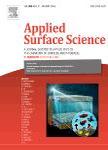版权所有:内蒙古大学图书馆 技术提供:维普资讯• 智图
内蒙古自治区呼和浩特市赛罕区大学西街235号 邮编: 010021

作者机构:Fuzhou Univ Sch Chem Fuzhou 350108 Fujian Peoples R China Chinese Acad Sci Fujian Inst Res Struct Matter State Key Lab Struct Chem Fuzhou 350002 Fujian Peoples R China Ordos Lab Ordos 017000 Inner Mongolia Peoples R China
出 版 物:《APPLIED SURFACE SCIENCE》 (Appl Surf Sci)
年 卷 期:2025年第689卷
核心收录:
学科分类:07[理学] 0805[工学-材料科学与工程(可授工学、理学学位)] 0703[理学-化学] 0702[理学-物理学]
基 金:National Key Research and Development Program of China [2022YFA1505700] National Natural Science Foundation of China Natural Science Foundation of Fujian Province [2023J06044, 2023J01213] Talent Plan of Shanghai Branch, Chinese Academy of Sciences [CASSHB-QNPD-2023-020] Self-deployment Project Research Program of Haixi Institutes, Chinese Academy of Sciences [CXZX-2022-JQ06] Natural Science Foundation of Inner Mongolia [2024QN02004] Transmission Electron Microscope Platform and High-performance Computing Platform of Fujian Science & Technology Innovation Laboratory for Optoelectronic Information of China
主 题:Formate Catalytic mechanism Multi-phase SnSx Electrocatalytic CO2 reduction
摘 要:Electrocatalytic carbon dioxide reduction (ECR) is emerging as a highly attractive approach for carbon neutrality. A heterogeneous structure constructed with multi-phase SnSx can alter electronic structure and form synergistic effects, facilitating the catalytic process. In this study, a multi-phase SnSx was synthesized incorporating Sn2S3 with SnS2. Theoretical calculation results indicate that the synergistic interactions between the two phases effectively alters the electronic structure of Sn2S3/SnS2, enhancing its conductivity and optimizing the adsorption of key intermediates in the ECR process, particularly *OCHO and *COOH. This ultimately facilitates a significant reduction in the energy barriers of the reaction s rate-determining step. Therefore, the conversion of CO2 to formate is significantly enhanced, and the synthesized Sn2S3/SnS2 catalyst demonstrates outstanding activity and selectivity, achieving a maximum Faradaic efficiency of 84.3% for formate at-1.1 V vs. RHE, while maintaining stability over 14 h of continuous electrolysis. This study advances the understanding of the synergistic interactions between the two phases in ECR for formate production, offering valuable insights for the design and development of efficient ECR electrocatalysts.